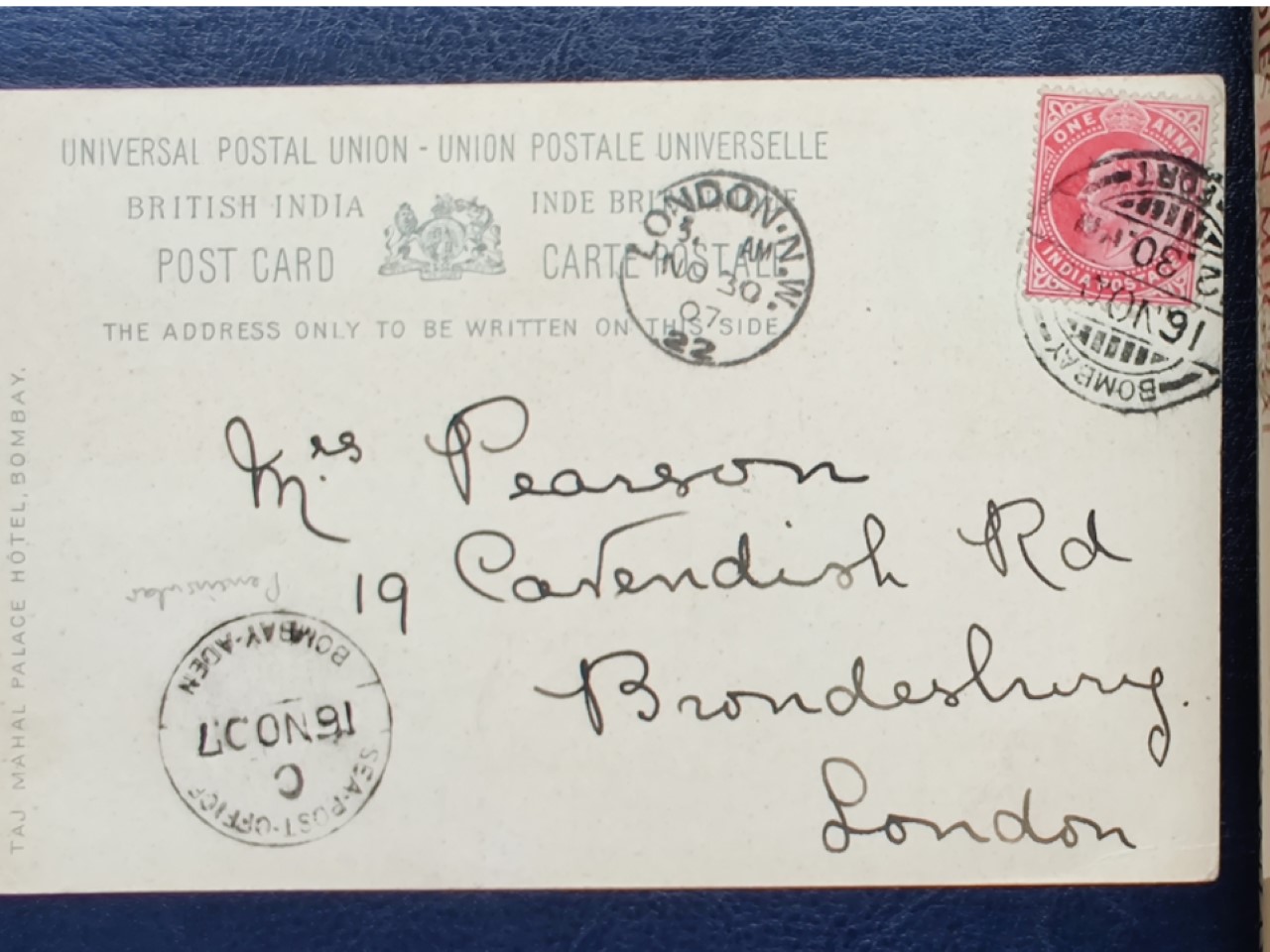
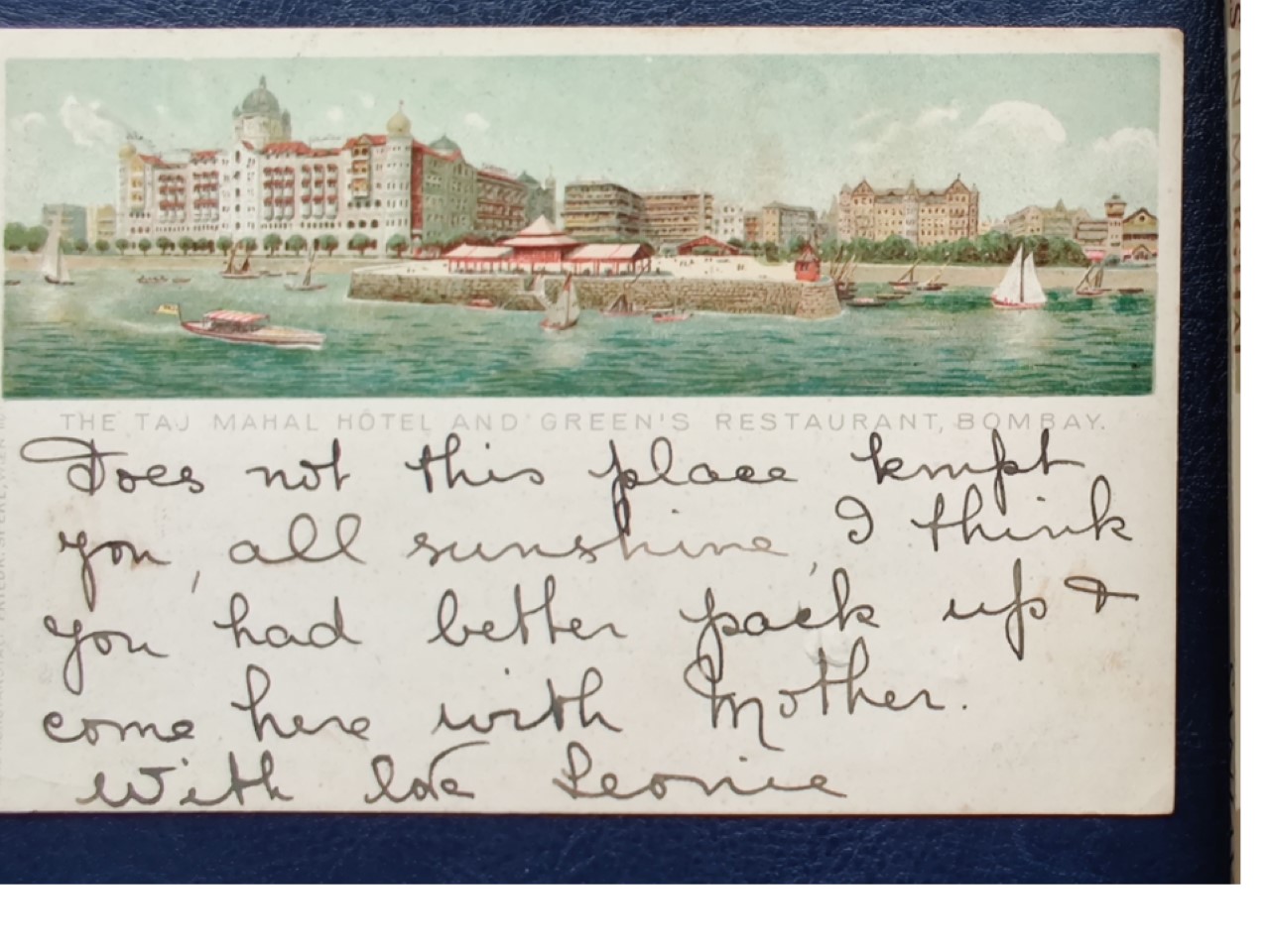
“Does not this place tempt you, all sunshine, I think you had better pack up & come here with mother. With love Leonie” so urged Leonie on this picture postcard to Mrs Pearson, probably her sister, in London in November 1907 to come with her mother. It is an invite as if Bombay was south of France. The picture post card has a panoramic view of Mumbai from the Eastern Harbour with The Taj Mahal Hotel and the Greens Restaurant with sail boats in the fore ground. Do notice the Pagoda which was replaced by the Gateway of India a few years later. Indeed, Bombay was no less than any place other place on the Continent as it was adorned with beautiful buildings, grounds and streets. Such picture post cards were the earliest mode of communication of the Global Traveller since the 1890s.
The picture post cards were mostly printed in England in colour with actual images. Once they became popular, artists were commissioned to create beautiful sketches or water colours. Being members of the Universal Postal Union the sender would affix the origin country’s postal stamp. In this case one anna stamp of Edward VII was affixed.
This post card is also stamped at Aden where it was sorted and sent ahead on its journey to England. When I started collecting Bombay (Mumbai) picture post cards of yester years I could not find any of the Mumbai ones here in Mumbai! But these were available aplenty in foreign lands, their ultimate destination. As this was destined for London, it was on ebay of a dealer in London from whom I bought. It came back from where it started over one hundred years ago. Quite a journey to have travelled!
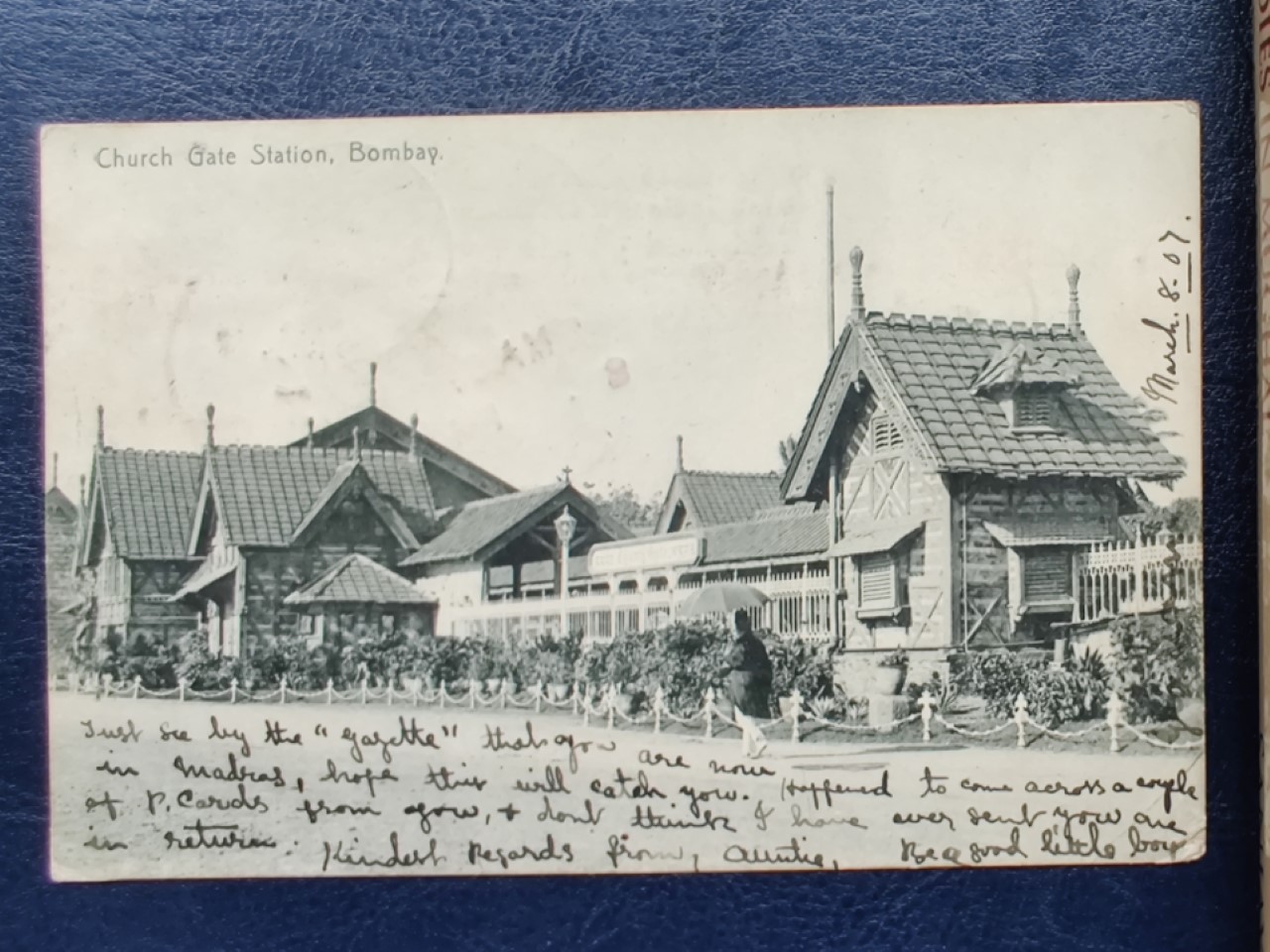
(A B&W post card of the Churchgate Station in 1907)
Initially the message could only be written on the picture side of the postcard. The other was left exclusively for address and required postage stamp to be affixed.
Postcards in thousands were sent by tourists and travellers after the advent of steam ships (passenger liners), especially after the opening up of the Suez Canal. All tell a tale of love, care, excitement and curious sightings.
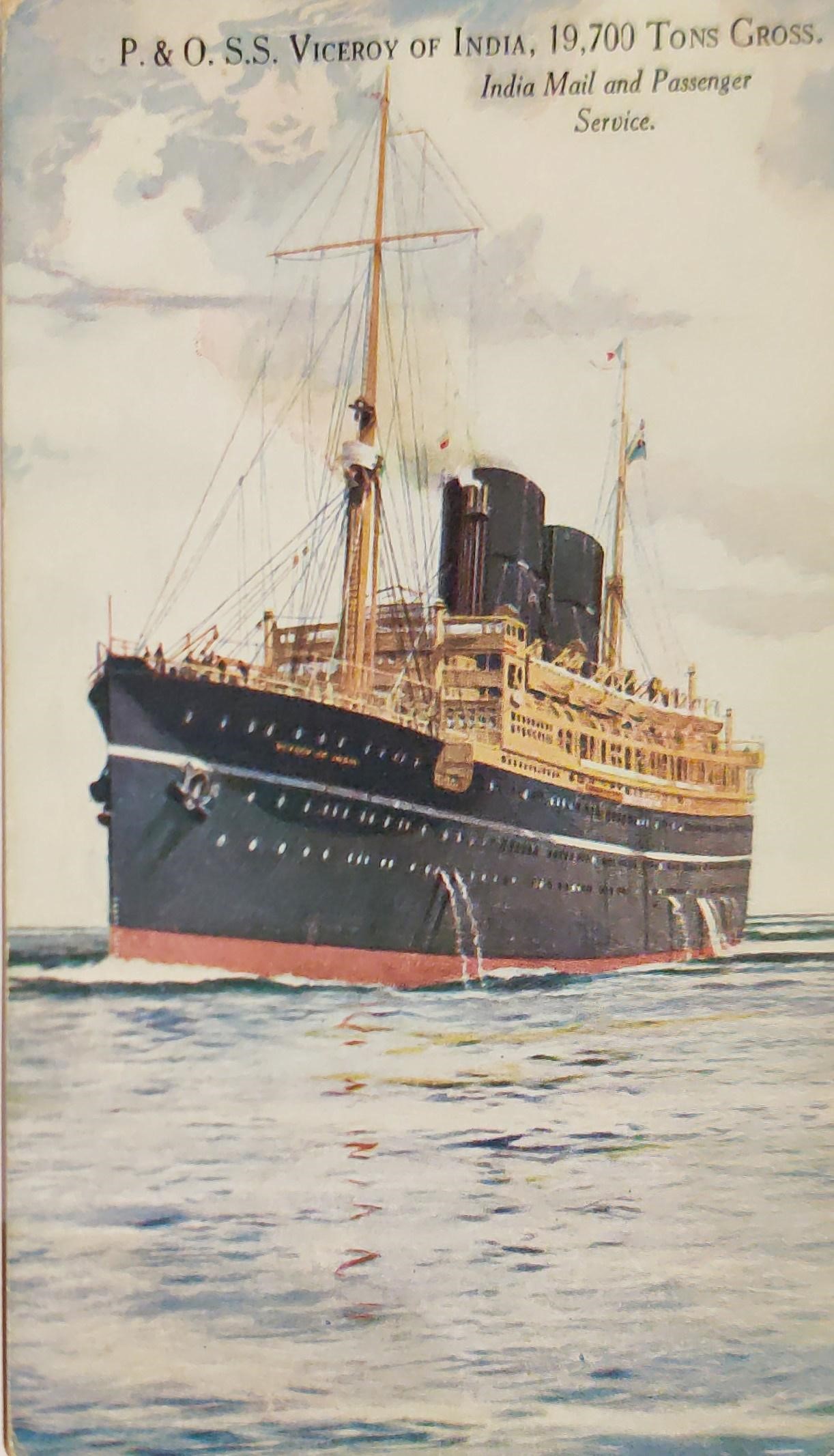
Postcard of the P & O S. S. Viceroy of India Mail and Passenger Service.
The post and telegraph department was the internet of the bye gone era, being the fastest mode of communication. Indian mail was sent across the world through various other sorting post offices like Aden, Singapore, Brindasi etc.

Luxury passenger cruise liners with regular sailings all over the world, printed their own editions of picture post cards with iconic images of their ports of calls. This acted both, as advertising and souvenirs.
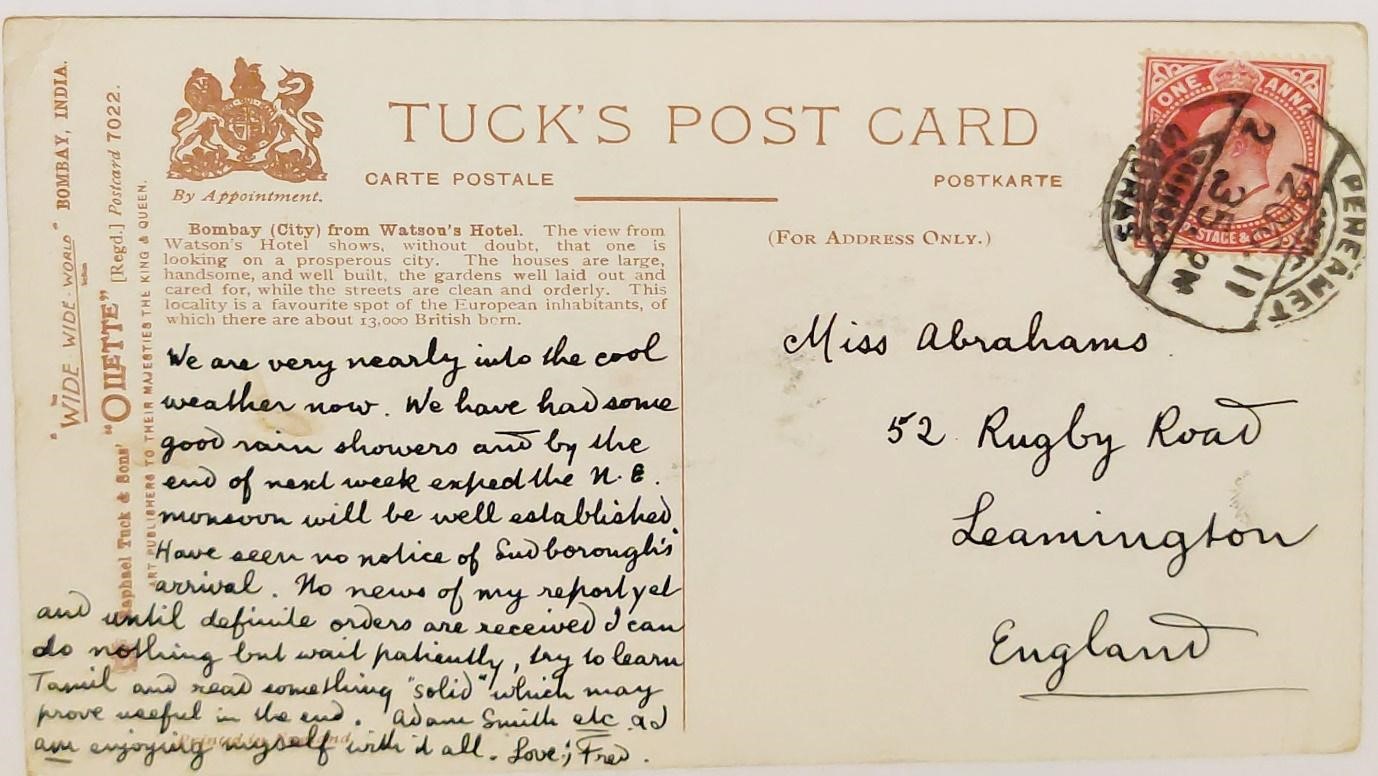
Raphael Tuck & Sons was a business started by Raphael Tuck and his wife in Bishopsgate in the City of London in October 1866, selling pictures and greeting cards. Eventually they branched off selling picture post cards as well, which became a great success. Their business was one of the best known in the "post card boom" of the late 1800s and early 1900s. Their contributions left a lasting effect on most of the artistic world. During the Blitz, the company headquarters, Raphael House, was destroyed including the originals of most of their series. The company never fully recovered thereafter (courtesy wikipedia).

The company commissioned artists for their various post cards which turned out to be very popular. This one has a street of Bombay.
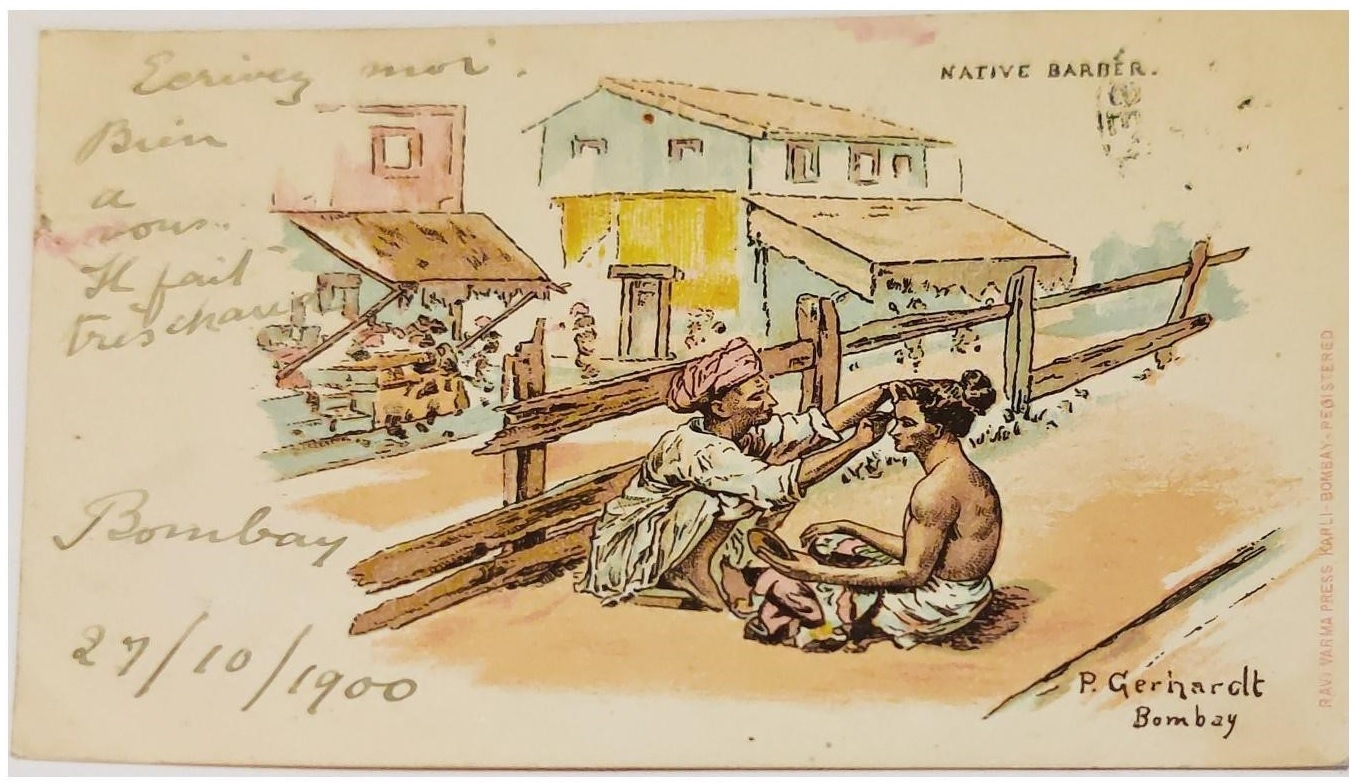
Such was the demand for these post cards that the local Indian press, like the Raja Ravi Varma Press in Bombay went into printing of post cards by commissioning artists. The Indian way of life intrigued the westerners and all sorts of professions, their costumes and people were replicated, and were popular postcard themes.

An early post card bearing one anna stamp of Queen Victoria, posted to Lucerne, Switzerland.

It was always a challenge to paste the stamp on a crowded postcard. Very often stamps were pasted on the picture side of the postcard.
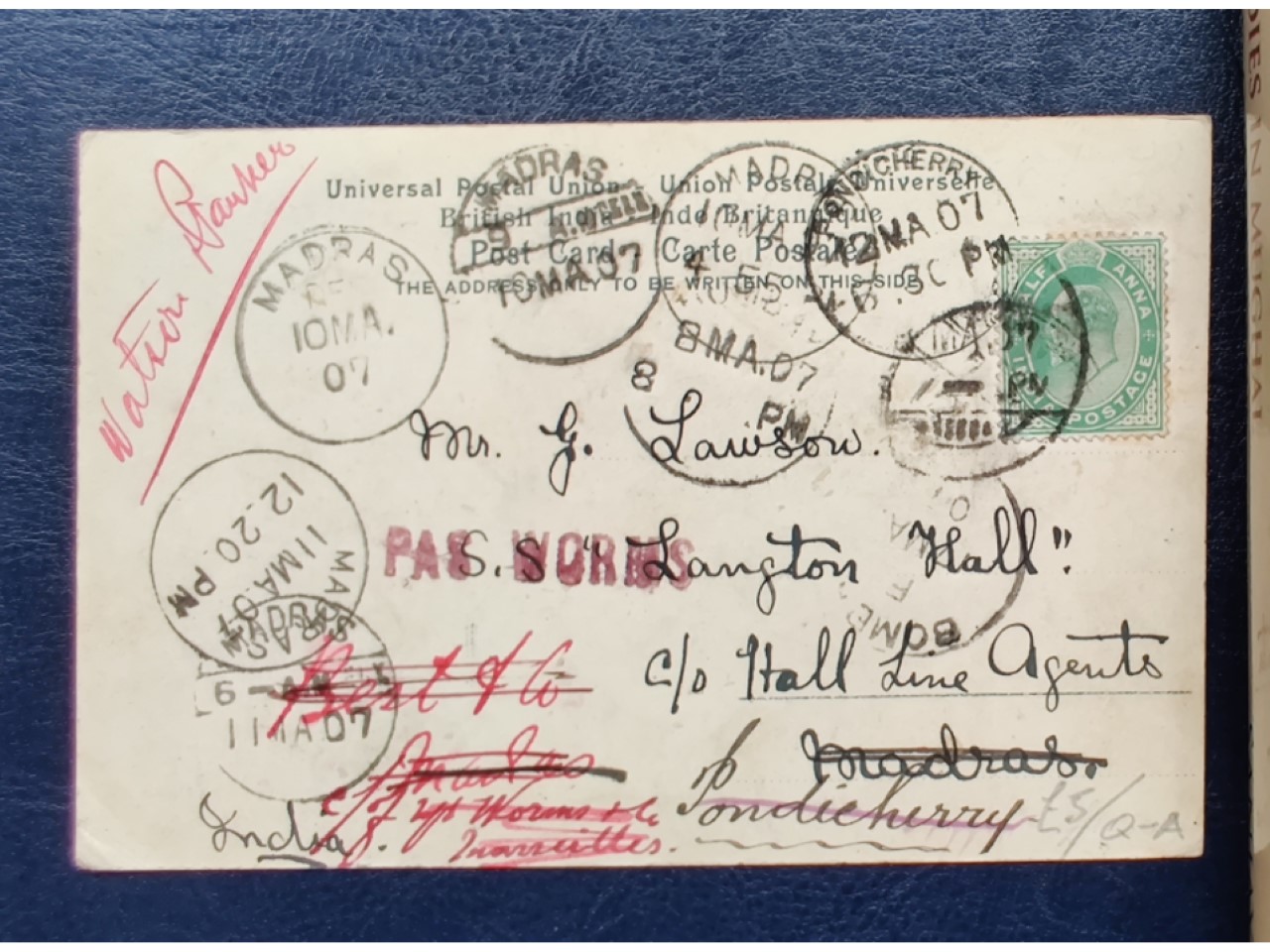
The efficiency of the postal department of those times can be gauged by the number of attempts by the department to deliver the post card to Mr. G. Lawson, who probably had moved from Madras to Pondicherry. The postmarks bear witness of the chase.
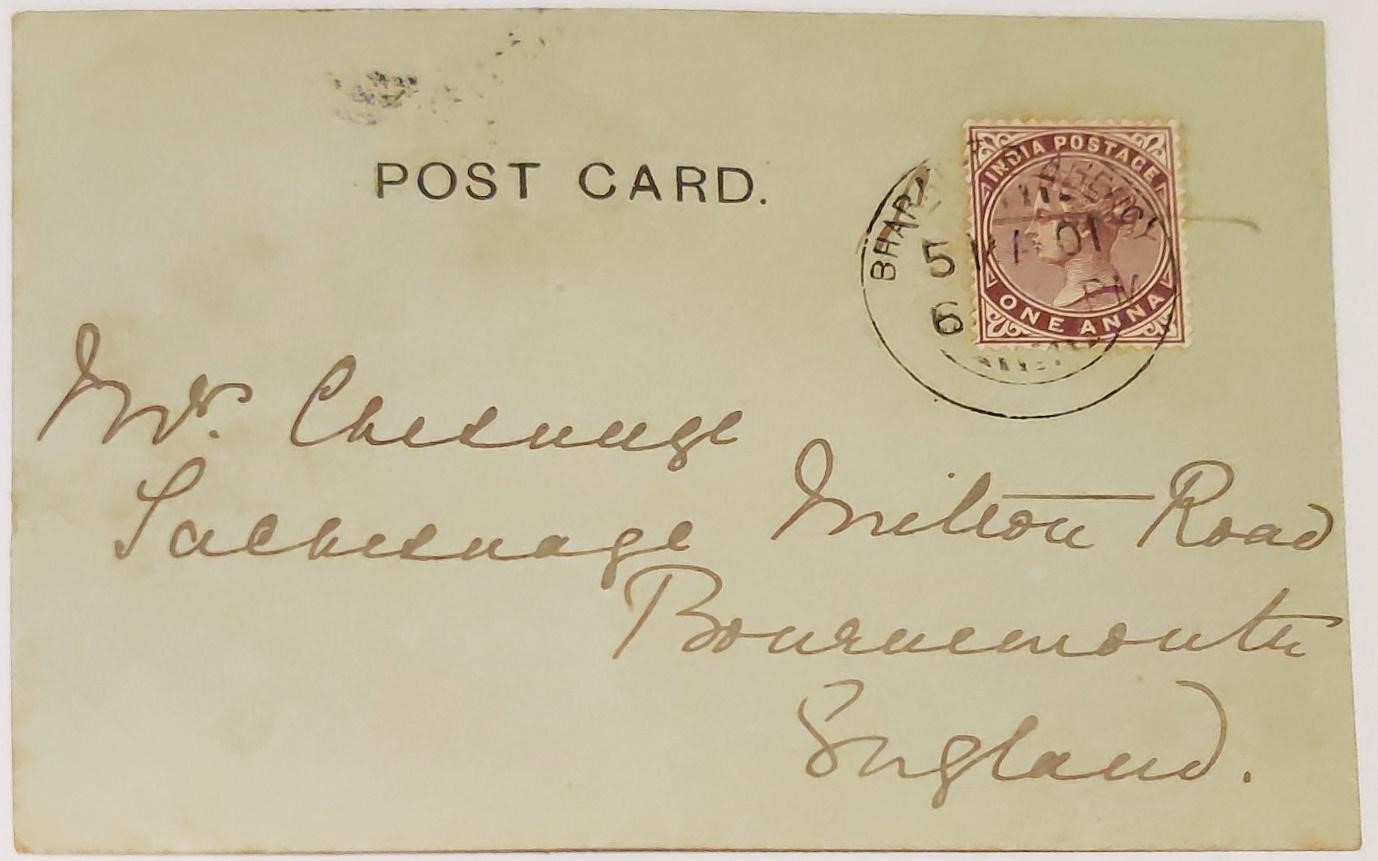
A cabinet sized post card. Initially post cards were slightly smaller in size.

Until recently, sending post cards still seemed to be in vogue. This post card has been typed by the sender.
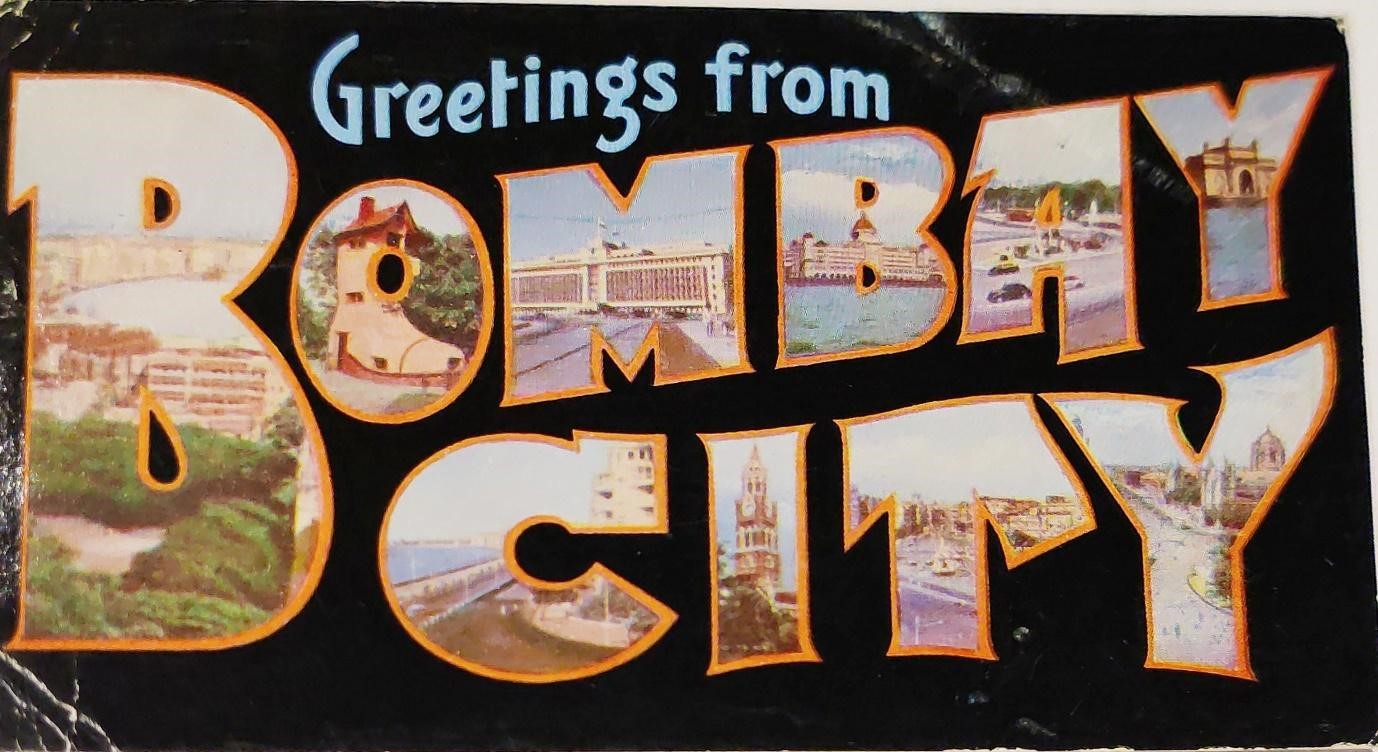
Multiview post cards running into thousands of varieties have been posted by millions of people all over the world.
Alas, like the telegram, we have also have bidden goodbye to the picture post cards replacing them by emails, face books and other social media.
